
I]
Whew! that was close! I had planned to give this lecture in French; fortunately, the organizers contacted me and asked me to lecture in English instead; and there's no equivalent for “Big Bird” in French. So. Welcome, everybody! Hello! Hello!... Hey, kids! Can you say PRODROMIC?

Prodromic: It's a historian's term, as well as medical. It means that certain events can give a sense of how later events are going to unfold, without necessarily suggesting a cause-and-effect relationship. A prodrome is purely heuristic… never mind.
And here's something prodromic about Mitt Romney's Big Bird statement: it had so few repercussions. Four years ago any promise to defund the Public Broadcasting Service or the National Endowment for the Arts was sure to meet with outrage. This time, it was met with a big yawn. As a Democratic apparat-chick explained:
There are more pressing issues than Big Bird for voters to care about. Big Bird has over $29 million in the bank and doesn't need government funding, he's a very big business now and can stand on its [sic] own. Other shows can get funding from sponsors...
It seems the only ones willing to stand up for Big Bird were the four-year-olds; and four-year olds don't vote. I'm pretty sure they blog, however...
II]
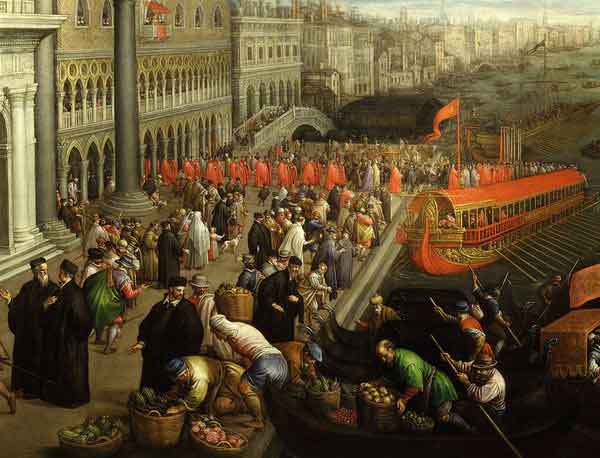
When the author of a new book is interviewed on National Public Radio and other media, when she presents her book in the The New York Times—that's a subtle hint that she’s raising certain issues certain powerful people think you should think about. The liberal media follows the model for the “manufacture of consent” defined by Walter Lippmann: the formulation of consensus around the directives of liberal democracy. The Times does not claim to determine the future, it merely claims to define what's significant.
Let's get with the prodrome.The book is The Rise of the New Global Super-Rich and the Fall of Everyone Else, by Chrystia Freeland. The problem is unequal distribution of income—in other terms, the 1%. Freeland postures like Occupy Wall Street but her agenda's straight from the International Monetary Fund, which recently decided that maybe income inequality is not a result of economic growth; income inequality might actually be a drag on economic growth. (A similar possibility was suggested in a recent report by the Congressional Research Office, the same report that was withdrawn at the insistence of Republican lawmakers.) Then again, expressions like “a drag on growth” are the economist's equivalent of art-world tags like “references” or “symbolizes”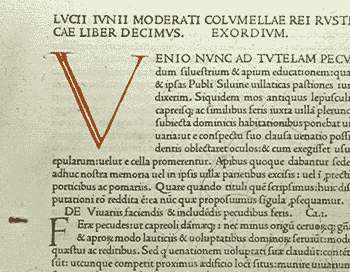 or “illustrates.” They don't mean a thing until the details come out.
or “illustrates.” They don't mean a thing until the details come out.
Freeland details (or rather, "illustrates") her argument with an anecdote: after 1350, she claims, the city of Venice went into decline because the greedy Venetian elites refused to share with the “risk-taking entrepreneurs.” It's a trite and well-worn argument, a rehash of the "restraint" narrative of Capitalism: you see, Capitalism, being a force of nature, cannot be invented since it's eternal and beyond human agency; it can only be restrained at certain historical junctures from developing even further, making us all even happier in the process. Find the restraints and remove them, et voilà! The only surprise here, is that Freeland should chose to pick on those same greedy Venetians who built San Giorgio, La Salute, and the social support network known as the Scuole Grandi; The ones who financed entrepreneurs like Titian, Palladio, Tiepolo, Aldus Manutius, not to mention Nicolas Jenson, the French printer who set up shop in Venice in 1470 to produce luxury editions for the elites but eventually thrived by printing university textbooks. Freeland might respond that Jenson and the others don't count as “entrepreneurs;” which raises the question, what did count as an entrepreneur in the Early Modern Era, and what counts as an entrepreneur now? And what exactly is, or should be, redistributed?
III]
A: An entrepreneur is someone who deserves to get rich, and someone who deserves to get rich is someone who's worthy of receiving whatever gets distributed. Recently the New York Times published an article that described as fact an advertising campaign which, if it happens at all, will take place in March, 2013. The campaign, says the Gray-Haired Slut, is promoted by “five European countries;” which, as it turns out, means “promoted in five European countries by a non-governmental trade group funded by private donations, with the support of the European Commission in Brussels.” Or somebody at the European Commission. Whatever. 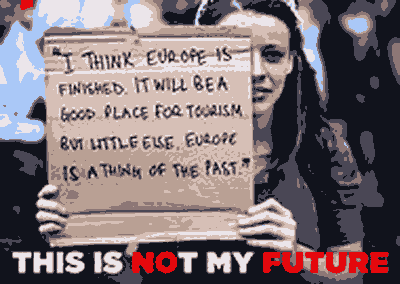 The gist is: we must support “Entrepreneurship” – see definition above. The projected ad begins with shots of a museum, with statues of Plato, Darwin and Charles Babbage—but not Ada Lovelace; Francis Crick—but not Rosalind Franklin. Then a young woman breaks out of a glass box. Then a young woman is shown holding a sign that reads “I think Europe is finished. It will be a good place for tourism but little else. Europe is a thing of the past,” while the banner underneath runs: “This is not my future.” Girl, it's not even your past...
The gist is: we must support “Entrepreneurship” – see definition above. The projected ad begins with shots of a museum, with statues of Plato, Darwin and Charles Babbage—but not Ada Lovelace; Francis Crick—but not Rosalind Franklin. Then a young woman breaks out of a glass box. Then a young woman is shown holding a sign that reads “I think Europe is finished. It will be a good place for tourism but little else. Europe is a thing of the past,” while the banner underneath runs: “This is not my future.” Girl, it's not even your past...
The resentful tone is typical of those French entrepreneurs who now call themselves “pigeons”, and who've enlisted twitter technology to thwart economic reform. One such messenger bird attacked the newly formed Socialist Government for « le dogme anticapitaliste, l’anti-économique, le brisage de rêves, la démotivation quasi sadique, » while Laurence Parisot, head of the French Chamber of Commerce (MEDEF), denounced « le racisme anti-entreprises. » – the comment is patterned on the far-right buzzword « racisme anti-blanc. » The tone of these messages is that of the Poujadistes, political activists of the nineteen-fifties who combined their resentment of upper-class Culture with the contradictory demand that the Government offer them more support and fewer controls: it's Freeland's tone as well. Ultimately, Freeland's message and Parisot's, and the message of the pigeons can be traced go back to Teddy Roosevelt, who's recently become a big favorite in the East Coast Academy; to Woodrow Wilson and the “New Freedom” plan of 1913: curbing the oligarchy should not lead to greater government control but to legislation that encourages small business and “entrepreneurship.” The bitterness of the message could have come from Mitt Romney's post-election whine about "gifts" to blacks and immigrants, the "old playbook," as Romney rightly called it. It's the book that played so well in the Reagan Revolution: the point now is not whether funds should be distributed, but whether they're distributed to the wrong, the undeserving folks: hippies and Welfare queens in the 'seventies; immigrants and college students; and next, no doubt, the tourist industry, the undeserving cultural workers.
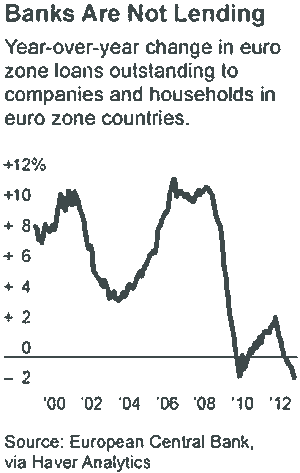 Most midstream economists agree by now there's a problem in Europe: there's no money to invest because it's being hoarded by the big banks; hence the “Capitalist's Dilemna,” as it's been called: the difficult task of deciding how best to redistribute value. And since by the definition of Capitalism only capital begets capital, the very possibility that the value to be encouraged and promoted by the state might be labor, for instance, or social capital, is off the table. The free-market attitude toward culture and the arts hasn't changed since Adam Smith back in 1776: art is a form of “unproductive labor” producing “trinkets and baubles” that merely gum up the economic machine:
Most midstream economists agree by now there's a problem in Europe: there's no money to invest because it's being hoarded by the big banks; hence the “Capitalist's Dilemna,” as it's been called: the difficult task of deciding how best to redistribute value. And since by the definition of Capitalism only capital begets capital, the very possibility that the value to be encouraged and promoted by the state might be labor, for instance, or social capital, is off the table. The free-market attitude toward culture and the arts hasn't changed since Adam Smith back in 1776: art is a form of “unproductive labor” producing “trinkets and baubles” that merely gum up the economic machine:
When Smith refers to The Wealth of Nations he's not talking about wealth from labor or from social connections; and certainly not from lazy artists. Since only that which can be turned into capital is productive, it stands to reason that only those aspects of the Culture Industry that are properly considered capital, should be encouraged.
IV]
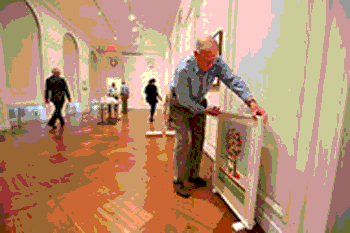 Fortunately sort of, the American Culture Industry is moving full throttle towards the exploitation of “its” capital, meaning that it's gradually abandoning any pretense to a social mission. Since the Late Middle Ages corporations in Anglo-Saxon lands have been granted a privileged tax status in acknowledgement of the social utility of their activities. Now these corporations are willing to sell their birthright for a mess of Paulus Potters, or rather, vice-versa. Take John Wilmerding, an art historian at Princeton, whom the Times shows hanging pictures at a commercial gallery. Wilmerding's lectures and publications were once a discreetly acceptable way of hiking the value of the Metropolitan Museum of Art's investments in American Old Masters, just as the Met's for-profit bookstore and its paying concert series were legally, ethically proper ways of supporting the Met's cultural, educational mission. At one point, also, the Met's Education Department was devoted to, you know, educating, not to running a profit-making booking agency, but of course that was before the Met changed its mission statement. In the latest step, the Museum has a new web-site, with direct links to its profit-making ventures. It's no longer the purpose of the accessory enterprises to jack up the value of the capital (the actual paintings and scultures), it's the purpose of the collection to support whatever profit-making enterprises the internet, the private galleries, the auction houses, the Museum itself allow. Or whatever the State Attorney General is willing to overlook, which happens to be plenty.
Fortunately sort of, the American Culture Industry is moving full throttle towards the exploitation of “its” capital, meaning that it's gradually abandoning any pretense to a social mission. Since the Late Middle Ages corporations in Anglo-Saxon lands have been granted a privileged tax status in acknowledgement of the social utility of their activities. Now these corporations are willing to sell their birthright for a mess of Paulus Potters, or rather, vice-versa. Take John Wilmerding, an art historian at Princeton, whom the Times shows hanging pictures at a commercial gallery. Wilmerding's lectures and publications were once a discreetly acceptable way of hiking the value of the Metropolitan Museum of Art's investments in American Old Masters, just as the Met's for-profit bookstore and its paying concert series were legally, ethically proper ways of supporting the Met's cultural, educational mission. At one point, also, the Met's Education Department was devoted to, you know, educating, not to running a profit-making booking agency, but of course that was before the Met changed its mission statement. In the latest step, the Museum has a new web-site, with direct links to its profit-making ventures. It's no longer the purpose of the accessory enterprises to jack up the value of the capital (the actual paintings and scultures), it's the purpose of the collection to support whatever profit-making enterprises the internet, the private galleries, the auction houses, the Museum itself allow. Or whatever the State Attorney General is willing to overlook, which happens to be plenty.
Six years ago I wrote that museum directors like Tom Krens had figured out that the internet had radically changed the Museum's relationship to relations of production, they just hadn't figured out what to do about it. Well, they've figured it out, now: it's to extract more capital from their investment, even if the traditional, protected investment (the museum as a physical space holding physical objects known as artworks) falls by the way. In New York State a strip club argues that pole dancing is a form of expression on a par with Marina Abramovic parading around the Museum of Modern Art in her birthday suit; therefore the nightclub should be tax-exempt on similar grounds. The case is being followed with the rapt attention of a New York State attorney general at a strip club: the implicit question is not merely whether hoochie-koochie dancers deserve Government support, it's whether museums do; and beyond that, whether museums even need it to begin with. Whether it's big birds or naked chicks, Culture's a business now, and the more museums proclaim themselves to be successful businesses, the weaker their argument that they, too, need Government protection. The Obama administration has been making noises about reducing charitable tax exemptions for the richest Americans, and since, for some odd reason, the richest Americans have a fondness for giving to museums that happen to boost the kind of artwork they happen to collect, it's a sure bet that the reduction, should it occur, would disproportionately affect museums and other cultural institutions, which over the past thirty years have increasingly made themselves dependent on the big money. In France, likewise, a proposal to reduce charitable tax exemptions for donations to cultural institutions was briefly raised immediately after the election of François Hollande, and immediately dropped. All of which may prove irrelevant: given the choice between unbridled speculation and the traditional, protected variety, museum directors and trustees and curators and art collectors may well choose the former. Some already have.
 Even in Europe, which tends to lag behind America in the privatization of Culture, the private interests that have long benefited from the Culture Industry are cashing in their chip. (The painting on the left is thought by scholars to represent the newly appointed French Minister of Culture, Aurélie Filippetti, contemplating the disintegration of a national consensus on the benefits of the Cultural Sector.) Recently, the French Government attempted to impose a tax on privately held artworks. The proposal was rejected, with one Socialist deputy arguing it would harm the private speculative market, which he calculated accounts for 45,000 jobs, as opposed to the millions of jobs created by tourism and the museum industry. (France alone has 85 million foreign visitors a year). In the French Senate a last-minute amendment that would have exempted artworks that were made accessible to the public was defeated: wealthy art collectors don't see the advantage of jacking up the value of their investments through public display any more. Incidentally, the Georges de la Tour painting shown here is not in France any more, it's in America; it was sold by André Fabius, father of Laurent Fabius, presently Minister of Foreign Affairs. (Many among the French political elites have large speculative collections of Old Masters.) Georges de la Tour is a classic example of private investors and dealers manipulating museums to manufacture a market for an artist whose reputation was, in great part, manufactured to begin with. To such people Art is capital tout court, not social capital.
Even in Europe, which tends to lag behind America in the privatization of Culture, the private interests that have long benefited from the Culture Industry are cashing in their chip. (The painting on the left is thought by scholars to represent the newly appointed French Minister of Culture, Aurélie Filippetti, contemplating the disintegration of a national consensus on the benefits of the Cultural Sector.) Recently, the French Government attempted to impose a tax on privately held artworks. The proposal was rejected, with one Socialist deputy arguing it would harm the private speculative market, which he calculated accounts for 45,000 jobs, as opposed to the millions of jobs created by tourism and the museum industry. (France alone has 85 million foreign visitors a year). In the French Senate a last-minute amendment that would have exempted artworks that were made accessible to the public was defeated: wealthy art collectors don't see the advantage of jacking up the value of their investments through public display any more. Incidentally, the Georges de la Tour painting shown here is not in France any more, it's in America; it was sold by André Fabius, father of Laurent Fabius, presently Minister of Foreign Affairs. (Many among the French political elites have large speculative collections of Old Masters.) Georges de la Tour is a classic example of private investors and dealers manipulating museums to manufacture a market for an artist whose reputation was, in great part, manufactured to begin with. To such people Art is capital tout court, not social capital.
V]
Which may have incalculable effects on the European Culture Biz – and it is a major business, after all. Unfortunately it's no longer treated as a business that falls in the category of “creative entrepreneurship,” as it once did. In the nineteen-sixties, for instance, French literature and philosophy were major export items, even though the literature and philosophy 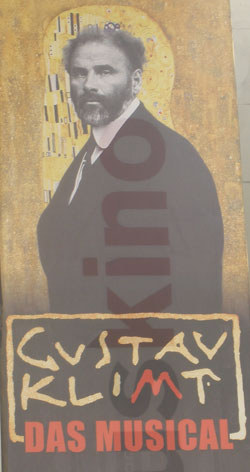 in question were often opposed to the Gaullist regime; likewise, in the early Interwar period, the Social-Democratic Government of Vienna attempted to develop avant-garde music, architecture and theater to compete in the global economy, as Vienna had done under the Habsburgs. After 1924, private capital provided by the Dawes Plan allowed Weimar Germany to build up a cultural economy that ultimately sucked in much of Vienna's talent pool. The Viennese plan had a surface similarity to a plan now under consideration in France (Projet Louis Gallois): the idea was to keep wages low and encourage high-end project development; the major difference is, that the Austrians attempted to compensate for low wages by providing massive support to the working class, even on the level of culture. It's a logical choice, since a nation's culture (unlike, say, its industrial production), functions simultaneously as an internal and external engine: at once a form of social cohesion, a local industry, and a non-competitive export. There's no reason to believe the French are prepared to go that way; in fact, they've been moving away from that model since May, 1968 showed them the dangers of promoting the wrong kind of culture.
in question were often opposed to the Gaullist regime; likewise, in the early Interwar period, the Social-Democratic Government of Vienna attempted to develop avant-garde music, architecture and theater to compete in the global economy, as Vienna had done under the Habsburgs. After 1924, private capital provided by the Dawes Plan allowed Weimar Germany to build up a cultural economy that ultimately sucked in much of Vienna's talent pool. The Viennese plan had a surface similarity to a plan now under consideration in France (Projet Louis Gallois): the idea was to keep wages low and encourage high-end project development; the major difference is, that the Austrians attempted to compensate for low wages by providing massive support to the working class, even on the level of culture. It's a logical choice, since a nation's culture (unlike, say, its industrial production), functions simultaneously as an internal and external engine: at once a form of social cohesion, a local industry, and a non-competitive export. There's no reason to believe the French are prepared to go that way; in fact, they've been moving away from that model since May, 1968 showed them the dangers of promoting the wrong kind of culture.
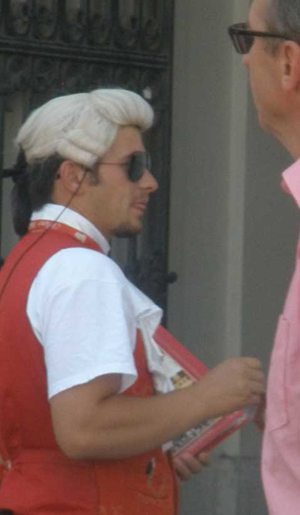
It's a long story: Globalizing Culture against Local Culture. In the latter part of the nineteenth century Saint-Simon's idea of a Mission Civilisatrice for Culture was folded into the notion of State-directed imperialism; With Napoleon III and the Saint-Simonian political scientist Michel Chevalier the two concepts were used to promote the idea of a European Federation. Today the cultural conflicts inherent in this vision have re-emerged with a vengeance.
Hey: you don't look like Michel Chevalier! Just as Greek Orientalizing Art was at once Greek and Mediterranean, just as Art Nouveau was at once International and fiercely nationalistic, so, too, the new Euro-Global art. Today this is most evident in Istanbul, which has been negotiating its entry into the European cultural zone for the last three hundred years. An institution like the Istanbul Modern plays a role as clear-cut as the Art Nouveau mosque nearby played a hundred years ago:
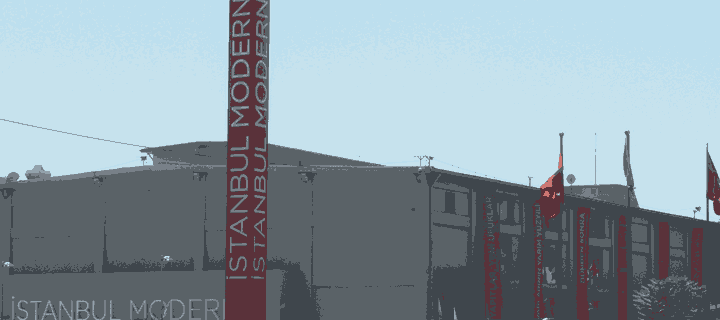
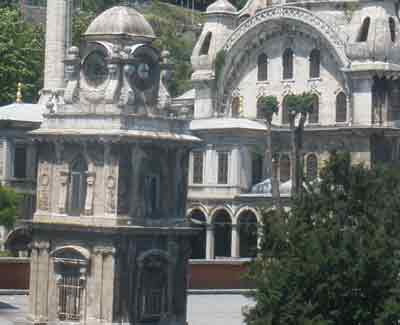
to bring Turkey in line with the latest in global culture, and by osmosis, to develop an audience among the Turkish bourgeoisie and working class that is as capable of responding to Marina Abramovic in a mature manner as it is to meet the high cultural and humanitarian standards of Europeans – why the Istanbul Modern even has a painting by a woman artist! To attend the Istanbul Modern (if you're Turkish) or the Louvre (if you're French) is to become One of Us. Or one of them: “The museum ….aims to convey the artistic creativity of Turkey to the masses and share its cultural identity with the international artistic environment,” says their mission statement. That, and a Euro, won't even get you on the trolley to Tophane...
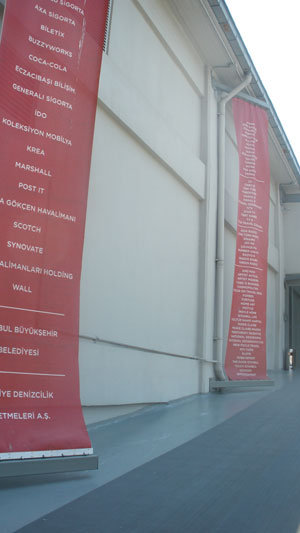
Some day perhaps the past 125 years will seem like a Golden age, the Investment Phase of Capitalism in Culture, when governments and business invested massively in the Mission Civilisatrice of Art; those days may be over. The people of Istanbul are leery of the promise of Europeanization; it's a wise leer, even in the Art World. Today in Vienna, in Athens, in Paris tomorrow, cultural administrators are ordered to comply with central directives posing as economic rationalization. “Budgetary Discipline,” it's called, and it's bound to get worse as the European Banking Union comes into effect. Walter Lippmann once suggested that the herd of citizens must be governed by “a specialized class whose interests reach beyond the locality.” In Europe today that “specialized class” is cracking the whip.
If I follow David Harvey, the next phase will have cultural institutions excluding every aspect of their mission except the extraction of capital: excluding the creation of social capital, the formation of a national/global identity, the education of a culturally skilled workforce. And we'll see this well beyond Europe; in cities like Campeche, Mexico, sites like Nim Li Punit in Belize, which have been “preserved” with investments from Unesco and the European union, and now, under the claim of developing tourism, are returned to their ancient role as engines of colonial exploitation. Is the Parthenon next? I'm having a Big Bird moment...
VI]
 It's a moment I share with my friends and colleagues, the European artists, art workers and museum personnel of Europe. Recently the online journal Artleaks reported on the anxiety of young Ukrainian artists “caught between two evils.” One such evil was the Director of the Kharkov Art Museum, shown in a video enthusiastically kicking away a pile of contemporary art works on the Museum floor. The other is Tatyana Mironova, an evil of the Knievel kind, well on her way to an official appointment as Director of the National Art Museum in Kiev. Mironova runs a private gallery on the side, and talks a lot about branding; as that arbiter of hip, the Ukrainian edition of Vogue, explains, there's no conflict for concern since Mironova's plan is to “bring people to the museum.” As opposed to bringing the Museum to the people, no doubt.
It's a moment I share with my friends and colleagues, the European artists, art workers and museum personnel of Europe. Recently the online journal Artleaks reported on the anxiety of young Ukrainian artists “caught between two evils.” One such evil was the Director of the Kharkov Art Museum, shown in a video enthusiastically kicking away a pile of contemporary art works on the Museum floor. The other is Tatyana Mironova, an evil of the Knievel kind, well on her way to an official appointment as Director of the National Art Museum in Kiev. Mironova runs a private gallery on the side, and talks a lot about branding; as that arbiter of hip, the Ukrainian edition of Vogue, explains, there's no conflict for concern since Mironova's plan is to “bring people to the museum.” As opposed to bringing the Museum to the people, no doubt.
A museum director on a motorcycle? Darling, that's sooo Tom Krens; So's the investment in branding as a miracle cure; as I wrote a few years back, during Krens's tenure at the Guggenheim and mine, “the return on his investment—the justification for the gamble—was made out to be the spontaneous appearance of hordes of visitors through the galleries.” Measuring success by the number of visitors is a feeble attempt to paper over the difference between the Museum's civilizing mission and its sponsors' demand for quantifiable economic results, people to the museum vs. museum to the people. The two were never commensurate, and whenever the economic imperative actually runs counter to the museum's mission the museum's mission will be thrown overboard.
My friends: there's nothing for you there. It's harsh of me to say this, since so many of you have spent years under the impression that you're not really artists, you're entrepreneurs in the field of Art. And you've spent considerable amounts of your own, hard cash and labor developing your own brand of Art as your social capital; developing your mind as a form of human capital, easily traded for the real thing. But the museum's not interested in social capital any more; it's not interested in helping develop Art, yours or others, as capital it may exploit, even when it's theirs for free. Think of yourselves as the workers in a factory in Europe or America, desperately refining your skills; meanwhile the plant's been sold, and your boss is selling the machinery for scrap and shipping production overseas. In the Age of Extraction, social capital isn't worth a hill of Beuys: even Marina Abramovic has recently complained that she'd earned almost nothing from her turn at the Museum: if you'll pardon my French, ça lui a coûté la peau des fesses...
I only wish Ukrainian artists would take a page from their own tradition, as the Turks are doing. The best-known painting in the Kharkov Museum is by the nineteenth-century artist, Ilya Repin. It references the Zaporozhian Cossacks, a fierce, independent group: they'd probably be considered war entrepreneurs today, or in France, intermittents du pillage. In 1676 the Sultan of Contantinople offered to hire them away from their Polish and Lithuanian overlords. Their reply was put into French verse by the great Franco-Polish poet Guillaume Apollinaire, in 1903; it's a reply you, too, might consider:
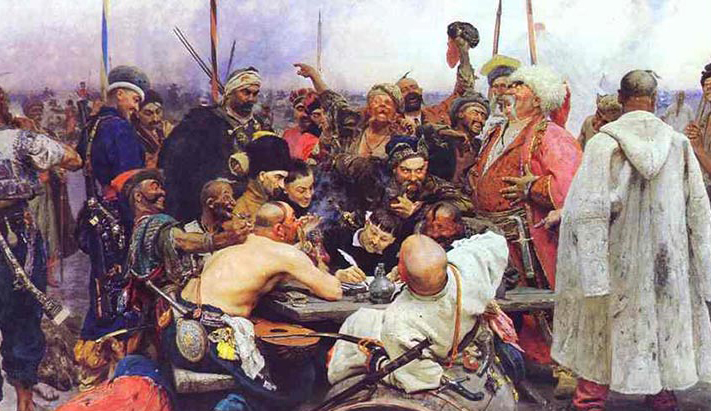
[11/7/2012; last revised 11/28/2012]
- Paul Werner
